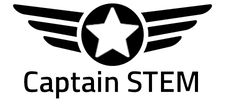John Kesapradist, Satellite Launch Base Safety Engineer
|
John is a Satellite Launch Base Safety Engineer at Maxar Technologies, Inc. (previously Space Systems/Loral). His background in mechanical engineering and materials science have enabled him to transition between a variety of roles in R&D, manufacturing, launch base safety, and more.
|
Education
|
BS in Mechanical Engineering
MS in Materials Science |
How did you end up in this role?
|
I grew up in the Apollo space program era, watching astronauts get launched to the Moon. I had always been interested in mechanical products – toys, cars, planes, even Moon rockets. I wanted to know what they did and how they worked. Near the end of high school, I browsed through college catalogs and found that almost all of the classes under Mechanical Engineering sounded interesting.
I got my BS in Mechanical Engineering from UC Irvine and began my career as a a Design Engineer for aircraft ventilation fans. While at UCI I had discovered composite materials to be a particularly interesting subject, worth studying further, but I thought working as an Engineer could be just as interesting so I tried that first. It was not very interesting to me so I decided to pursue an MS Materials Science in UCLA with an emphasis on composite materials. After graduating with my MS in Materials Science, I worked at an R&D company on high thermal conductivity composite materials, and then moved to Maxar (previously Space Systems/Loral) for more R&D on composite materials. After R&D funding ran out, I transferred to manufacturing of composite satellite parts. Then I transferred to Mechanical Systems Engineering because I wanted a bigger picture view of spacecraft design and manufacturing, but went back to R&D when money became available. After R&D funding ran out again, I transferred to Launch Base Safety, which is what I am doing now. "STEM occupations are where your analysis, based on science or engineering, carries as much weight as anyone else’s analysis."
If I were to do this all over again, I would still take the high school, BSME, work, MS, to R&D path but I would learn to manage my time better to have a better social life and better people skills. After getting into a big company, I would look around to see what technical paths and management paths were available and discuss with my manager the direction I ought to take. I would still keep up in my technical field and still participate in various STEM outreach programs.
|
A day in the life
|
I start my day by checking the latest information on launch schedule for each satellite we have in process, and check the launch base safety document submittal schedule relative to each satellite so I can make sure I am working on the next safety document that will be required. For each satellite, I review design details to identify hazardous subsystems and review test reports looking for hazardous components. I summarize these in appropriate safety documents which are then used by launch base personnel to prepare for the hazardous operations that will be performed on the spacecraft at launch base (such as loading toxic/explosive fuel) before it is launched into space. Occasionally I have video or phone calls with NASA on ground safety submittals for spacecraft that we are building for them.
|
Advice for aspiring students
|
As a student, I struggled with time management for doing school work, cooking, cleaning, and socializing. Early in my career I struggled with forward thinking and discussing my career path with my manager.
If you are interested in pursuing mechanical engineering and/or materials science, I recommend tinkering with stuff, learning how things work and fixing things. You should also read about mechanical products that you are interested in, and even go to science museums or air shows. STEM occupations are where your analysis, based on science or engineering, carries as much weight as anyone else’s analysis (no matter what your gender or cultural background is). This is in contrast to many non-STEM fields, where reputation and image carry more weight. You are able to show your worth early in your career. For example, one of my early design projects was a ventilation fan for the Boeing 747-400 airplane. The manager for the Boeing ventilation system came for the design review, and I presented my design to him. After a few technical questions (for which I had good answers), his response to the review (for a product designed by an Asian kid fresh out of college) was simply: “OK”. No request for my manager to re-do the analysis, because engineering analysis always comes out the same no matter who does it. There were no doubts about my work, despite being the only young person and non-Caucasian person in the room. “Those with 3rd World skills will earn 3rd World wages.” – Lester C. Thurow. STEM skills are “1st World” skills, so you will more likely be able to earn decent wages in a STEM occupation. DiscoverE is a program where engineers visit K-12 schools to introduce kids to engineering. I was involved with that program for 19 seasons. I also participated in two Madison Park Academy career/ STEM events and was a FIRST robotics mentor for 7 seasons with my daughters. These are wonderful programs for engaging youth in STEM, and you might look for these opportunities at your school (or even suggest them to your science, engineering, or math teachers!) |


